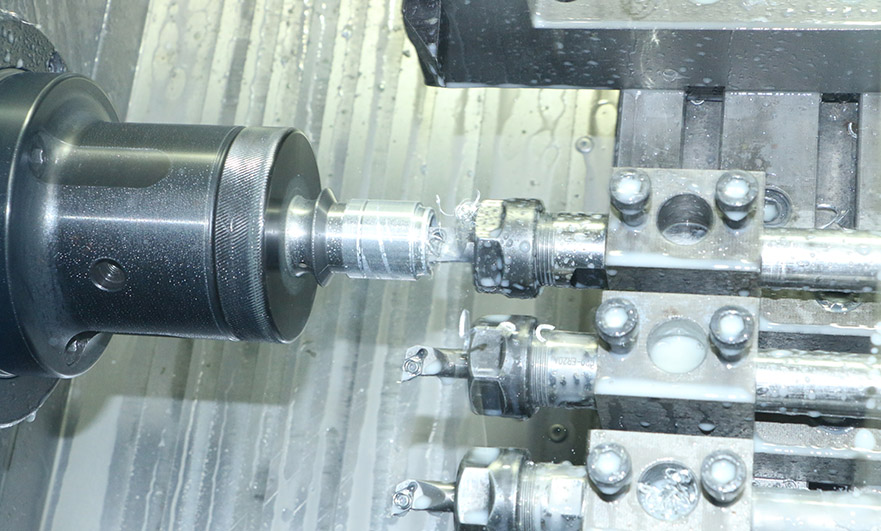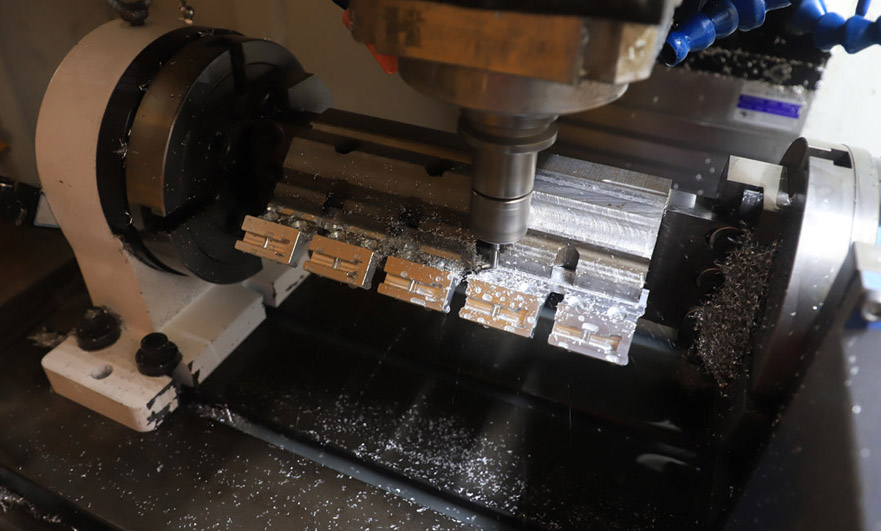15 years one-stop China custom CNC machining parts factory

Hey there I’m VMT Sam!
With 25 years of CNC machining experience we are committed to helping clients overcome 10000 complex part-processing challenges all to contribute to a better life through intelligent manufacturing. Contact us now
 1331 |
Published by VMT at Sep 15 2022
1331 |
Published by VMT at Sep 15 2022
Turning, milling, planing, grinding, drilling, boring, the highest precision of these machines and the tolerance levels achievable by various CNC machining methods are here.
1. CNC Turning
When CNC turning parts rotate, the turning tool performs linear or curved cutting processing in the plane. CNC turning is generally carried out on a lathe, and the inner and outer cylindrical surfaces, end surfaces, conical surfaces, forming surfaces and threads of CNC machining parts are processed. The general turning accuracy is IT8-IT7, and the surface roughness is 1.6-0.8 μm.
1) Rough turning attempts to improve the turning efficiency by using a larger depth of cut and feed without reducing the cutting speed, but the CNC machining accuracy can only reach IT11, and the surface roughness is rα 20—10μm.
2) Semi-finishing and finishing should use high speed and small feed and cutting depth as much as possible. The CNC machining accuracy can reach IT10-IT7, and the surface roughness is Rα10-0.16μm m.
3) High-speed turning of non-ferrous metal parts on a high-precision lathe with a finely ground diamond turning tool can make the CNC machining accuracy reach IT7-IT5, and the surface roughness Rα0.04-0.01 μm. This CNC turning is called "mirror turning".

2. CNC Milling
CNC milling refers to the use of rotating multi-blade tools to cut a workpiece, which is an efficient CNC machining method. It is suitable for CNC machining of planes, grooves, various forming surfaces (such as keys, gears, threads) and special surfaces of molds. According to the same or opposite direction of the main movement speed and workpiece feed during CNC milling, it can be divided into down milling and up milling. The milling accuracy can generally reach IT8-IT7, and the surface roughness is 6.3-1.6 μm.
1) The rough milling accuracy is IT11-IT13, and the surface roughness is 5-20μm
2) The semi-finishing machining accuracy is IT8-IT11, and the surface roughness is 2.5-10μm. 3) The machining accuracy of fine milling is IT16-IT8, and the surface roughness is 0.63-5 μm.

3. CNC Planing
CNC planing is a cutting method that uses a planer to reciprocate the workpiece horizontally and linearly. Mainly used for shape processing of parts. General planing accuracy can reach IT9-IT7, surface roughness Ra6.3-1.6μm
1) The rough planing accuracy can reach IT12-IT11, and the surface roughness is 25-12.5 μm
2) The semi-fine planing accuracy can reach IT10-IT9, and the surface roughness is 6.2-3.2μm
3) The finishing accuracy can reach IT8-IT7, and the surface roughness is 3.2-1.6 μm
4. Grinding
Grinding refers to the CNC machining method that uses abrasives and abrasive tools to remove excess material on the workpiece. It is a finishing process and is widely used in mechanical CNC machining and manufacturing.
Grinding is usually used for semi-finishing and finishing, the accuracy can reach IT8-IT5 or even higher, and the surface roughness is generally 1.25-0.16μm.
1) The surface roughness of precision grinding is 0.16-0.04μm
2) The surface roughness of ultra-precision grinding is 0.04-0.01 μm. 3) The surface roughness of mirror grinding can reach below 0.01 μm
5. Drilling and Cutting
Drilling is a basic method of hole CNC machining. Drilling is often performed on drill presses and lathes, but can also be performed on boring or milling machines. The drilling accuracy is low, generally only reaching IT10, and the surface roughness is generally 12.5-6.3 μm m. After drilling, reaming and reaming are often used for semi-finishing and finishing.
6. Boring
Boring is the cutting process of expanding the inner diameter of a hole or other circular contour with a tool. Its applications generally range from semi-roughing to finishing. The tool used is usually a single-edged boring tool (called a boring bar).
1) The boring accuracy of general steel can reach IT9-IT7, and the surface roughness is 2.5-0.16μm m
2) The precision of fine boring can reach IT7-IT6, and the surface roughness is 0.63-0.08μm m Note: The machining accuracy is mainly used to characterize the fineness of the product, and is a term used to evaluate the geometric parameters of the machined surface. The standard for measuring the machining accuracy is the tolerance level, from IT01, IT0, IT1, IT2, IT3 to IT18, a total of 20 levels. Among them, IT01 shows that the machining accuracy of the part is the highest, and IT18 shows that the machining accuracy is the lowest. General industrial and mining machinery belongs to IT7 level, and general agricultural machinery belongs to IT8 level. Depending on the function of the product, the processing accuracy to be achieved is different, and the processing form and processing technology selected are also different.
The above is the summary of VMT CNC machining manufacturers, if you have different opinions, please contact us to discuss with us.
Ready To Start Your Next Project?
Get Instant Quote

Request a Free Quote
Send us a message if you have any questions or request a quote. We will get back to you ASAP!
